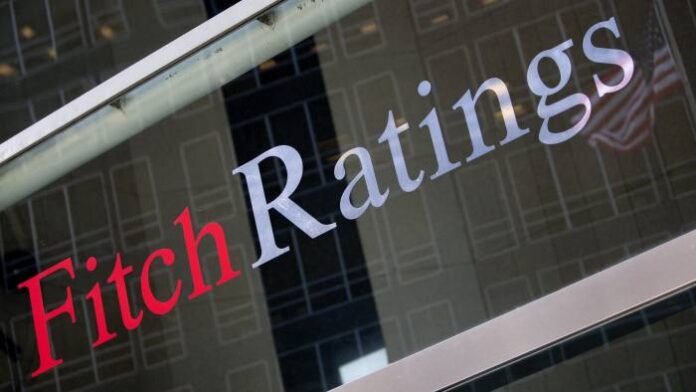
LAHORE: Fitch Ratings said on Friday that Pakistan’s fiscal deficit will reach 9.5 per cent of Gross Domestic Product (GDP) in the outgoing fiscal year 2020, and will be 8.2 per cent of GDP in the fiscal year 2021.
These are more conservative estimates than the Pakistani government’s projection of fiscal deficits, which is 9.1 per cent of GDP in the fiscal year 2020, and 7 per cent in the fiscal year 2021.
In a statement released on Friday, Fitch said that Pakistan will face challenges in meeting its fiscal consolidation targets set in the next fiscal year’s budget unveiled on June 12 due to economic shocks and health crisis linked with the coronavirus pandemic.
Fitch also said that public finances were a key credit weakness even before the onset of the health crisis linked to the coronavirus pandemic.
It added that it had affirmed Pakistan’s rating at B- with a stable outlook in January this year, however, “continuing support from the IMF and other official creditors should help the government finance its budget and contain risks associated with the country’s fragile external position.”
The government’s own projection of 9.1 per cent of GDP is higher than the original budget proposal of 7.1 per cent. According to Fitch, revenues fell short of the target, due both to the economic fallout from the pandemic and the fact that the budget goal was ‘overly ambitious’.
Fitch also said that current expenditures were also boosted by the government’s Rs1.2 trillion support package in March to boost health spending and provide assistance to low-income households.
Fitch was not optimistic about the chances of Pakistan’s deficit declining in fiscal year 2021 to the government figure of 7 per cent of GDP.
“This assumes tax revenue will increase by 28 per cent from the estimate for FY20 and will prove challenging in the absence of new tax measures, especially if economic growth remains sluggish,” it explained.
“Expenditure is forecast to decline modestly as a share of GDP, although the government aims to boost healthcare spending and support to low-income households through its Ehsaas programme. Further expenditure cuts could be implemented if revenues fall short of the target,” said Fitch.
Instead, it said that its own more conservative estimates would push the public debt-to-GDP ratio up to 89 per cent of GDP. This is above the median level of 66 per cent among Pakistan’s rating peers in that year.
“We expect that the ratio will begin to fall after FY21, but this remains contingent on the government’s ability to make progress in fiscal consolidation and on GDP growth rates,” it highlighted.
As of March, Pakistan’s public debt-to-GDP ratio was 83 per cent. In 2019, that ratio stood at 85 per cent.
It warned that due to the government’s limited fiscal headroom within its rating category will constrain its ability to provide a more robust fiscal response to the coronavirus.
Fitch said Pakistan’s rating was reflective of its fragile external position considering its high external debt repayments.
It flagged the liquid foreign exchange reserves being low at around $10.1 billion, however, import compression helped in raising reserve import cover to about 3.6 months.
According to Fitch, lower oil prices are expected to offset the decline in remittances, which will keep the current account deficit stable at 2 per cent of GDP through the next fiscal year.
“External liquidity will be supported by the country’s participation in the G-20’s Debt Service Suspension Initiative, which the government estimates will delay servicing payments in 2020 of around $1.8 billion. The initiative involves only bilateral creditors at present and the Pakistani government has indicated that it has no plans to seek private-sector debt service suspension,” noted Fitch.
The rating agency shared that Pakistan also received $1.4 billion of emergency support from the IMF under the Rapid Financing Instrument in April, in addition to its existing $6 billion Extended Fund Facility (EFF).
“We expect the IMF to be flexible in its programme targets with Pakistan given the magnitude of the pandemic shock and expect the release of accumulated tranches from the EFF over the coming months. Additional financing has also been forthcoming from other multilateral and bilateral creditors,” it concluded.





